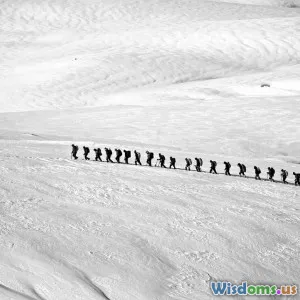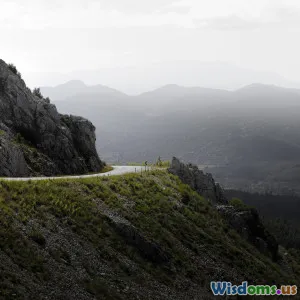
Are Mountaineering Expeditions Becoming Too Commercialized?
7 min read Explore how commercialization impacts mountaineering expeditions, weighing adventure integrity against popular demand and safety concerns. (0 Reviews)
Are Mountaineering Expeditions Becoming Too Commercialized?
Mountaineering, a pursuit historically synonymous with raw adventure, personal grit, and an intimate relationship with nature’s highest summits, is facing a modern transformation. The surge in commercial mountaineering expeditions—offering guided tours to iconic peaks like Everest, Denali, and Kilimanjaro—has made high-altitude climbing more accessible but also ignited fierce debate: are these adventures becoming too commercialized?
This article delves into the multifaceted dynamics of this trend, evaluating its impacts on climber safety, environmental sustainability, mountain culture, and local economies. We’ll examine real-world examples, industry data, and testimonies from seasoned climbers and expedition leaders to paint a comprehensive picture.
The Commercialization Trend: From Elite Pursuit to Mass Market
Mountaineering was once the realm of elite adventurers, scholars, and daring explorers. The mid-20th century expeditions required profound technical skills, immense physical conditioning, and a DIY ethic.
However, from the 1990s onward, significant commercialization emerged. Companies began offering guided expeditions with high success rates, leveraging stronger logistics, helicopter support, and supplemental oxygen. For example, Everest beckons approximately 800 climbers each season today, a sharp increase from fewer than 100 pre-commercial era.
This availability widened participation, granting outdoor enthusiasts who lacked intimate climbing skills a chance at summiting. Yet, this democratization comes with tradeoffs.
Drivers Behind Commercial Growth
-
Advances in Equipment and Logistics: Lightweight gear, satellite communication, and well-mapped routes lower technical barriers.
-
Growing Adventure Tourism Industry: According to Allied Market Research, the adventure tourism market is projected to reach $1,626 billion by 2030, including mountaineering sectors.
-
Social Media Amplification: Climbers sharing summit photos inspire mass interest, driving demand.
-
Local Economies Seeking Revenue: Nepali and Tibetan communities depend substantially on expedition tourism, influencing facilitation services and permit issuance.
Impact on Climber Safety and Experience
Positive Outcomes
Commercial operators typically provide:
-
Experienced Guides: Experts like Russ McLean with Himalayan Experience facilitate safer climbs.
-
Medical Support: Inclusion of high-altitude trained doctors.
-
Structured Itineraries: Careful acclimatization processes reduce altitude illness.
-
Enhanced Equipment Availability: Clients receive high-grade boots, tents, and oxygen.
This framework has reduced fatalities per 100 attempts compared to solo adventurers in earlier decades.
Rising Challenges
On the downside:
-
Crowding and Bottlenecks: The 2019 Everest season reported over 200 permits issued, leading to dangerous queues near the summit. Crowding can increase exhaustion, reduce weather windows, and precipitate accidents.
-
Fatigue and Inexperience: Clients often pay upwards of $50,000 for an Everest climb without possessing adequate climbing background. Guides must compensate, stretching team resources.
-
False Sense of Security: Commercial backing may foster complacency among less skilled climbers, underestimating risks.
Environmental and Cultural Impact
Environmental Strains
Commercial expeditions generate substantial waste: discarded oxygen cylinders, human excrement, and abandoned gear litter high-altitude zones. A 2019 Clean Up Everest campaign collected over five tons of trash. Left unregulated, increased footfall accelerates soil erosion and disrupts native ecosystems.
Cultural Dimensions
Local Sherpa communities, integral to guiding and portering, earn livelihoods but face increased hazards. The 2014 avalanche in Khumbu killed 16 Sherpas, underscoring occupational risks.
There are concerns this tourism commoditizes indigenous culture, where spiritual significance of mountains sometimes clashes with profit-driven ventures.
Perspectives from the Mountaineering Community
Reinhold Messner, legendary climber, has critiqued commercialization, warning it turns mountains into 'theme parks,' diluting the essence of exploration.
Conversely, leaders like Veikka Gustafsson embrace guided experiences as gateways for broader public to appreciate nature, advocating responsible practices.
Navigating the Future: Balancing Commercialization and Ethics
Regulations and Permit Caps
Nepali authorities have periodically adjusted climbing permit caps to curb overcrowding (e.g., temporarily halting permits during peak seasons). Stricter safety standards and mandatory expedition leader qualifications are under discussion.
Sustainable Expedition Models
Tour operators are innovating with:
- Zero-waste goals
- Local community partnerships to ensure economic benefits are ethically shared
- Training programs raising client competence before expeditions
Educating Climbers
Pre-climb certification programs and increased transparency about risks can empower clients to make informed decisions.
Conclusion: Pathways to Responsible Mountaineering
The commercialization of mountaineering expeditions is an irreversible trend with nuanced outcomes. It has undeniably increased access, economic prosperity in local regions, and enhanced safety frameworks. Yet, it also risks diluting mountaineering’s foundational spirit of self-reliance, introducing crowding hazards, environmental damage, and ethical dilemmas.
The key lies in managing commercialization with accountability—through robust regulation, environmental stewardship, respectful incorporation of indigenous cultures, and cultivating climbers’ respect and preparedness.
If achieved, mountaineering can continue to inspire awe without becoming a mere commercial spectacle—a frontier where human aspiration and natural grandeur coexist sustainably.
References:
- Allied Market Research, "Adventure Tourism Market Size"
- Himalayan Database
- "Clean Up Everest" Campaign Reports, 2019
- Interviews with Reinhold Messner and Veikka Gustafsson
- Nepal Tourism Board regulations and permit statistics
Rate the Post
User Reviews
Popular Posts




















